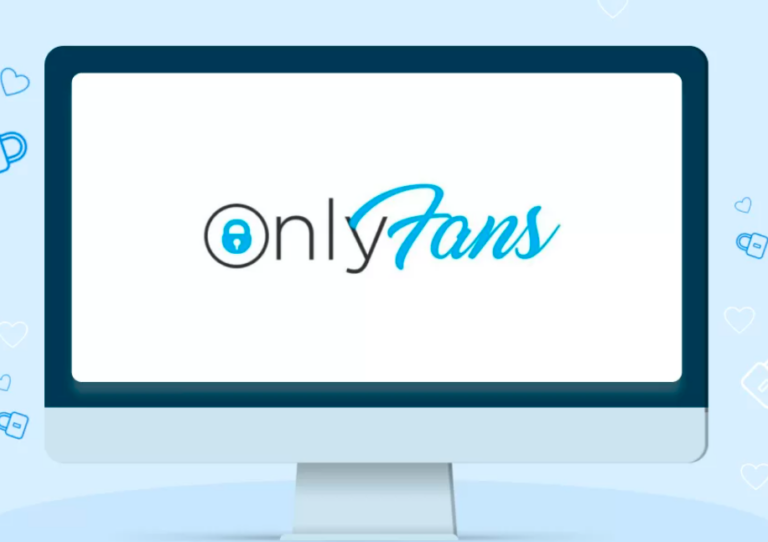Types Of Social Media Marketing
In today’s digitally connected world, social media has become an indispensable part of our daily lives. From sharing personal experiences to promoting businesses, social media platforms have evolved into powerful tools for marketing and communication. Social media marketing, or SMM, is a strategic approach that harnesses the vast potential of social media platforms to reach and engage with target audiences.
In this blog post, we will delve into the realm of social media marketing, exploring its significance in the modern business landscape and the diverse range of strategies it encompasses. Whether you are a business owner seeking to expand your brand’s online presence or a marketing enthusiast eager to understand the nuances of this dynamic field, this exploration of social media marketing will provide valuable insights and actionable knowledge.
Why is Social Media Marketing Important?
Social media marketing has emerged as a game-changer for businesses and brands of all sizes. With billions of active users across various platforms, the potential reach of social media is unparalleled. From Facebook to Twitter, Instagram to LinkedIn, each platform offers unique opportunities to connect with specific audiences and engage them in meaningful ways.
Moreover, social media is not just a one-way street of communication; it facilitates a two-way interaction between brands and customers. This open line of communication allows businesses to gather feedback, address concerns, and build a loyal community of followers. The power of social media lies in its ability to humanize brands, making them more relatable and approachable to their target audience.

What are The Different Types of Social Media Marketing?
1. Organic Social Media Marketing
Organic social media marketing is a type of marketing that uses social media platforms to reach and engage with potential customers without paying for advertising. This can be done by creating and sharing high-quality content, participating in conversations, and building relationships with other users.
There are many benefits to using organic social media marketing. First, it is a cost-effective way to reach a large audience. Second, it can help to build brand awareness and credibility. Third, it can generate leads and sales.
There are a few things to keep in mind when using organic social media marketing. First, it takes time and effort to build a following and generate engagement. Second, you need to create content that is relevant to your target audience and that they will find interesting. Third, you need to be consistent with your posting schedule.
If you are looking for a way to reach your target audience and grow your business, organic social media marketing is a great option. With a little effort, you can see results.
1.1 The Benefits of Organic Social Media Marketing
- Cost-effective: Organic social media marketing is a cost-effective way to reach a large audience. You don’t have to pay for advertising, so you can reach more people with your marketing message.
- Builds brand awareness and credibility: When you create and share high-quality content on social media, you are building brand awareness and credibility. People will start to see you as an expert in your field, and they will be more likely to do business with you.
- Generates leads and sales: Organic social media marketing can also generate leads and sales. When you post interesting and engaging content, people will start to follow you. You can then use the following to promote your products or services and generate leads.
1.2 How to Do Organic Social Media Marketing
There are a few things you need to do to do organic social media marketing effectively. First, you need to create high-quality content. This content should be relevant to your target audience and that they will find interesting. You should also post regularly so that your followers see your content.
In addition to creating content, you should also participate in conversations on social media. This means responding to comments and questions and starting discussions about topics that are relevant to your target audience. You should also build relationships with other users on social media. This means following other users, liking their content, and commenting on their posts.
In conclusion, Organic social media marketing is a great way to reach your target audience and grow your business. With a little effort, you can see results.
Here are some additional tips for doing organic social media marketing effectively:
- Use relevant hashtags.
- Run contests and giveaways.
- Promote your content on other channels.
- Track your results and make adjustments as needed.
With a little effort, you can use organic social media marketing to reach your target audience and grow your business.
1.3 What are the forms of Organic Social Media Marketing?
Social Media Engagement
Social media engagement is the interaction between a brand and its audience on social media platforms. This interaction can take many forms, such as liking, sharing, commenting, and clicking on links.
Social media engagement is important for a number of reasons. First, it can help you build brand awareness and credibility. When people interact with your content, they are more likely to remember your brand and see you as an expert in your field.
Second, social media engagement can help you attract new customers. When people see that your content is engaging, they are more likely to follow you on social media, visit your website, or make a purchase.
Third, social media engagement can help you drive sales. When people interact with your content, they are more likely to be exposed to your products or services. This can lead to increased sales and revenue.
There are a number of ways to increase social media engagement. Here are a few tips:
- Create high-quality content. Your content should be interesting, informative, and visually appealing. If your content is not engaging, people will not interact with it.
- Post regularly. You need to post new content on a regular basis to keep your audience engaged. The frequency of your posts will depend on your industry and your target audience.
- Use relevant hashtags. Hashtags are a great way to get your content seen by more people. When you use relevant hashtags, your content will appear in search results for those hashtags.
- Run contests and giveaways. Contests and giveaways are a great way to generate excitement and engagement around your content. When people enter a contest or giveaway, they are more likely to engage with your content and share it with their friends.
- Respond to comments and questions. When people comment or ask questions on your social media posts, make sure to respond promptly. This shows that you are engaged with your audience and that you value their feedback.
By following these tips, you can increase social media engagement and reach a wider audience with your content.
In conclusion, Social media engagement is an important part of any social media marketing strategy. By following the tips in this chapter, you can increase social media engagement and reach a wider audience with your content.
Content Marketing
Content is the backbone of social media marketing. It involves creating and sharing valuable, informative, and entertaining content such as blog posts, articles, videos, and infographics to attract and engage the target audience. The goal of content marketing is to build relationships with potential customers and ultimately drive sales.
There are many benefits to using content marketing. First, it can help you build brand awareness and credibility. When you create high-quality content that is relevant to your target audience, you are essentially establishing yourself as an expert in your field. This can help you build trust with potential customers and make them more likely to do business with you.
Second, content marketing can help you attract new customers. When you create valuable content that people find interesting and informative, they are more likely to follow you on social media, subscribe to your email list, or visit your website. This can help you reach a wider audience and generate leads.
Third, content marketing can help you drive sales. When you create content that is specifically designed to promote your products or services, you can drive traffic to your website or landing page and increase conversions.
There are a few things to keep in mind when using content marketing. First, you need to create high-quality content that is relevant to your target audience. If your content is not valuable or interesting, people will not engage with it.
Second, you need to distribute your content effectively. You need to make sure that your content is visible to your target audience. This means publishing your content on the right channels, promoting it through social media, and submitting it to relevant directories.
Third, you need to track your results. You need to track how many people are seeing your content, how many people are engaging with it, and how many people are taking action as a result of it. This will help you determine the ROI of your content marketing campaigns.
If you are looking for a way to build brand awareness, attract new customers, and drive sales, content marketing is a great option. With a little effort, you can see results.

How to Do Content Marketing on Social Media
Here are some tips for doing content marketing on social media:
- Create shareable content. Your content should be interesting, informative, and visually appealing. If your content is not shareable, people are less likely to engage with it.
- Post regularly. You need to post new content on a regular basis to keep your audience engaged. The frequency of your posts will depend on your industry and your target audience.
- Use relevant hashtags. Hashtags are a great way to get your content seen by more people. When you use relevant hashtags, your content will appear in search results for those hashtags.
- Run contests and giveaways. Contests and giveaways are a great way to generate excitement and engagement around your content. When people enter a contest or giveaway, they are more likely to engage with your content and share it with their friends.
- Track your results. You need to track your results to see what’s working and what’s not. This will help you optimize your content marketing campaigns and improve your results.
If you follow these tips, you can use social media to effectively promote your content and reach a wider audience.
In conclusion, Content marketing is a powerful tool that can help you build brand awareness, attract new customers, and drive sales. With a little effort, you can use content marketing to achieve your marketing goals.
2. Paid Social Media Marketing
Paid social media marketing is a type of marketing that uses social media platforms to reach and engage with potential customers by paying for advertising. This can be done by creating and running social media ads, or by partnering with social media influencers.
There are many benefits to using paid social media marketing. First, it can help you reach a wider audience than you would be able to reach with organic social media marketing. Second, it can help you target your ads to specific demographics and interests, which can improve your return on investment. Third, it can help you generate leads and sales more quickly than organic social media marketing.
There are a few things to keep in mind when using paid social media marketing. First, you need to create effective ads that will resonate with your target audience. Second, you need to set a budget that you are comfortable with. Third, you need to track your results so that you can see what is working and what is not.
If you are looking for a way to reach your target audience and grow your business quickly, paid social media marketing is a great option. With a little effort, you can see results.
2.1 The Benefits of Paid Social Media Marketing
- Reach a wider audience: Paid social media marketing can help you reach a wider audience than you would be able to reach with organic social media marketing. This is because you can target your ads to specific demographics and interests, which means that your ads are more likely to be seen by people who are interested in what you have to offer.
- Target your ads: Paid social media marketing also allows you to target your ads to specific demographics and interests. This means that you can ensure that your ads are seen by people who are most likely to be interested in what you have to offer. This can help you improve your return on investment (ROI).
- Generate leads and sales: Paid social media marketing can also help you generate leads and sales more quickly than organic social media marketing. This is because you can use your ads to drive traffic to your website or landing page, where you can capture leads or make sales.
2.2 How to Do Paid Social Media Marketing
There are a few things you need to do to do paid social media marketing effectively. First, you need to create effective ads that will resonate with your target audience. This means that your ads should be relevant to your target audience’s interests and needs, and they should be visually appealing. Second, you need to set a budget that you are comfortable with. Paid social media marketing can be expensive, so it is important to set a budget that you are comfortable with. Third, you need to track your results so that you can see what is working and what is not. This will help you optimize your campaigns and improve your ROI.
In conclusion, Paid social media marketing is a great way to reach your target audience and grow your business quickly. With a little effort, you can see results.
Here are some additional tips for doing paid social media marketing effectively:
- Use relevant keywords in your ad copy.
- Create eye-catching visuals.
- Target your ads to specific demographics and interests.
- Track your results and optimize your campaigns.
With a little effort, you can use paid social media marketing to reach your target audience and grow your business.
2.3 What are the forms of paid social media marketing?
Social Media Influencer Marketing
Social media influencer marketing is a type of marketing that uses social media influencers to promote a product or service. Influencers are people who have a large following on social media, and they are often seen as experts in their field. When an influencer recommends a product or service, their followers are more likely to trust their recommendation and take action.
There are many benefits to using social media influencer marketing. First, it can help you reach a large audience. Influencers often have a large following of people who are interested in the same things they are. This means that your message can reach a lot of people with a single post.
Second, social media influencer marketing can help you build trust with your target audience. When influencers recommend a product or service, their followers are more likely to trust their recommendation. This is because they know that the influencer has used the product or service themselves, and they trust the influencer’s opinion.
Third, social media influencer marketing can help you generate leads and sales. When influencers recommend a product or service, their followers are more likely to click on the link to learn more or make a purchase. This can help you generate leads and sales for your business.
There are a few things to keep in mind when using social media influencer marketing. First, you need to find the right influencers. Not all influencers are created equal. You need to find influencers who have a large following of people who are interested in your product or service.
Second, you need to create a mutually beneficial relationship with the influencer. You need to offer the influencer something in return for their promotion, such as free products or services, or a commission on sales.
Third, you need to track your results. You need to track how many people are seeing the influencer’s posts, how many people are clicking on the links, and how many people are making purchases. This will help you determine the ROI of your influencer marketing campaigns.
If you are looking for a way to reach a large audience, build trust with your target audience, and generate leads and sales, social media influencer marketing is a great option. With a little effort, you can see results.
How to Find and Work with Social Media Influencers
Here are some tips for finding and working with social media influencers:
- Identify your target audience. Who are you trying to reach with your influencer marketing campaign? Once you know your target audience, you can start to look for influencers who have a large following of people who fit that description.
- Use social media analytics tools. There are a number of social media analytics tools that can help you identify influencers. These tools can show you how many followers an influencer has, what kind of content they post, and what kind of engagement they get from their followers.
- Reach out to influencers. Once you’ve identified a few influencers you’d like to work with, reach out to them and introduce yourself. Explain your business and why you think their audience would be a good fit for your product or service.
- Offer something in return. Influencers are busy people, so they’re not going to promote your product or service for free. You’ll need to offer them something in return, such as free products or services, or a commission on sales.
- Track your results. Once you’ve started working with influencers, it’s important to track your results. This will help you determine the ROI of your influencer marketing campaigns.
In conclusion, Social media influencer marketing is a great way to reach a large audience, build trust with your target audience, and generate leads and sales. With a little effort, you can see results.
2.4 Social Media Ads
Social media ads are a type of paid social media marketing that allows businesses to target their ads to specific audiences on social media platforms. Social media ads can be used to promote a variety of products and services, including products, services, events, and even just brand awareness.
There are many benefits to using social media ads. First, they can help you reach a wider audience. When you target your ads to specific audiences, you can ensure that your ads are seen by people who are more likely to be interested in what you have to offer.
Second, social media ads can help you increase brand awareness. When people see your ads, they are more likely to remember your brand and become familiar with your products or services.
Third, social media ads can help you drive traffic to your website or landing page. When people click on your ads, they are taken to your website or landing page, where they can learn more about what you have to offer and take action, such as making a purchase.
There are a few things to keep in mind when using social media ads. First, you need to create effective ad campaigns. Your ad campaigns should be targeted to the right audience, and they should be creative and engaging.
Second, you need to track your results. You need to track how many people are seeing your ads, how many people are clicking on your ads, and how many people are taking action as a result of your ads. This will help you determine the ROI of your social media ad campaigns.
If you are looking for a way to reach a wider audience, increase brand awareness, and drive traffic to your website or landing page, social media ads are a great option. With a little effort, you can create effective ad campaigns that will help you achieve your marketing goals.

How to Create Social Media Ads
Here are some tips for creating social media ads:
- Define your goals. What do you want to achieve with your social media ads? Do you want to reach a wider audience? Increase brand awareness? Drive traffic to your website? Once you know your goals, you can start to create ad campaigns that are tailored to those goals.
- Target your audience. Who are you trying to reach with your social media ads? Once you know your target audience, you can start to target your ads to specific demographics, interests, and behaviours.
- Create engaging ad creative. Your ad creative should be creative and engaging. It should be something that will capture people’s attention and make them want to click on your ad.
- Track your results. It is important to track the results of your social media ad campaigns. This will help you determine the ROI of your campaigns and make necessary adjustments.
By following these tips, you can create effective social media ads that will help you achieve your marketing goals.
In conclusion, Social media ads are a powerful tool that can help you reach a wider audience, increase brand awareness, and drive traffic to your website or landing page. With a little effort, you can create effective ad campaigns that will help you achieve your marketing goals.
Other Forms of Social Media Marketing Include:
- Social Media Contests and Giveaways: Contests and giveaways are effective tactics to boost engagement and increase brand awareness. They encourage user participation and sharing, leading to organic growth.
- Social Listening: Monitoring and analyzing social media conversations about a brand or industry is known as social listening. This valuable data helps businesses understand customer preferences and sentiment, aiding in better-targeted marketing strategies.
- User-Generated Content (UGC): Encouraging users to create and share content related to a brand or product is a powerful way to build authenticity and trust. UGC can take the form of reviews, testimonials, or creative content made by customers.
Conclusion
Social media marketing is a multifaceted approach that continues to evolve as technology and user behaviour change. Understanding the different types of social media marketing and their applications can empower businesses to craft compelling strategies to connect with their audience, foster brand loyalty, and achieve their marketing goals. So, let’s embark on this journey to explore the exciting world of social media marketing together!



